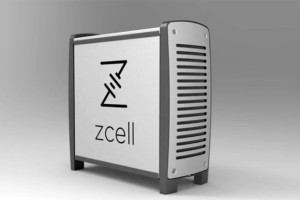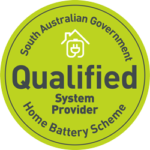 The ZCell solar battery is more recyclable than competing solar storage systems. The ZCell uses zinc bromide solar battery technology rather than lithium that is used in many competing products and most notably the popular Tesla Wall power solar battery solution.
The ZCell solar battery is more recyclable than competing solar storage systems. The ZCell uses zinc bromide solar battery technology rather than lithium that is used in many competing products and most notably the popular Tesla Wall power solar battery solution.
“The active parts are plastic, aluminium and steel, the fluid electrolyte can be removed and cleaned and put in the next battery so the whole thing is very recyclable,” executive chairman Simon Hackett said.
About 8,000 tonnes of lithium-ion batteries are thrown away every year and in the next 20 years that is expected to jump to 150,000 tonnes, partly due to a rise in the use of big home solar batteries, according to the Australian Battery Recycling Initiative.
Some of the z-cells technical parameters include:
Some key characteristics of ZCell are:
- 48 Volt DC nominal battery
- Maximum 10kWh energy output per daily cycle
- Full 10kWh cycle depth available
- Warranted electrode stack lifetime 30,000 kWh energy throughput or ten years (whichever comes first)
- Expected electrode stack throughput 40,000 kWh
- No cycle depth limitations – battery performance and lifetime is not sensitive to cycle depth
- Charge current 50A continuous (linear charge curve, no drop in charge rate up to 100% full)
- Discharge current 75A continuous, 100A for 30 minutes, 125A for one minute
- Operating electrolyte temperature range of 10-45 degrees Celsius. Operation at ambient temperatures outside of this range can often be maintained
See this FAQ for more details. - On-board battery management, control and monitoring system. Monitors electrolyte fluid and outside ambient temperature, cell voltage, charge/discharge current, and includes two fluid leak detectors.
- Battery can suspend operations automatically if safe limits are exceeded (to self-protect). Where appropriate,










